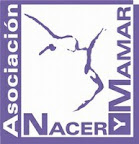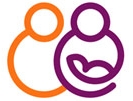Comparación entre unidades atendidas por matronas y por obstetras: Self-Rated "No-" and "Low-" Risk Pregnancy: A Comparison of Outcomes for Women in Obstetric-Led and Midwife-Led Units in England
ARTICULO ORIGINAL Se compararon mujeres calificadas de no o bajo riesgo atendidas en unidades dirigidas por matronas con aquellas que fueron atendidas en unidades dirigidas por obstetras. Las mujeres atendidas por matronas tuvieron un parto mas corto, , menos intervenciones, menos necesidad de analgesia y mas incidencia de parto normal que las unidades dirigidas por obstetras. Mostramos ABSTRACT.
Texto completo con suscripción: ENLACE
Andrew G. Symon RM, MA(Hons), PhD, Jeanette Paul BSc, BArch(Hons), RIBA, RIAS, Maggie Butchart MA(Hons), MSc, Val Carr BA, MSc, Pat Dugard MA, PG, Dip(MathStat). Self-Rated "No-" and "Low-" Risk Pregnancy: A Comparison of Outcomes for Women in Obstetric-Led and Midwife-Led Units in England Birth Vol. 34 Issue 4 Page 323 December 2007
ABSTRACT: Background: Debate in the United Kingdom about place of birth often concerns obstetric-led units and midwife-led units and relates to notions of risk and safety. Outcomes for these two types of unit are often not comparable because of the restricted selection criteria for midwife-led units. The purpose of this study was to compare outcomes for women intending to give birth in these different types of unit and whose self-rated pregnancy risk level was "none" or "low." Methods: Self-completion questionnaires were distributed to mothers 8 days after the birth in 9 units (6 midwife led 3 obstetric led) over a 6-month period. Results: Completed questionnaires were received from 432 women (midwife led = 294, obstetric led = 138). Mothers in midwife-led units spent shorter times in labor in the unit (p < 0.01), received less analgesia (p < 0.01) and had fewer interventions (p < 0.01), and were more likely to have a normal delivery (p < 0.01) than women in obstetric-led units. Similar differences were found for both primiparous and multiparous women. In terms of the number of midwives attending each woman, analysis of covariance suggested different models of care depending on type of unit (p < 0.05) and parity (p < 0.01). Conclusions: Since these mothers’ self-rated risk level was none or low, some comparability of outcomes is permissible. It appears that models of care are significantly different in obstetric-led units compared with midwife-led units, leading to greater likelihood of intrapartum intervention, need for analgesia, and assisted or operative delivery. A randomized controlled trial examining such units would permit a conclusive examination of these outcomes. (BIRTH 34:4 December 2007)







 Anterior: Madre no hay mas que una
Anterior: Madre no hay mas que una

 Web MatronasUbeda by
Web MatronasUbeda by 